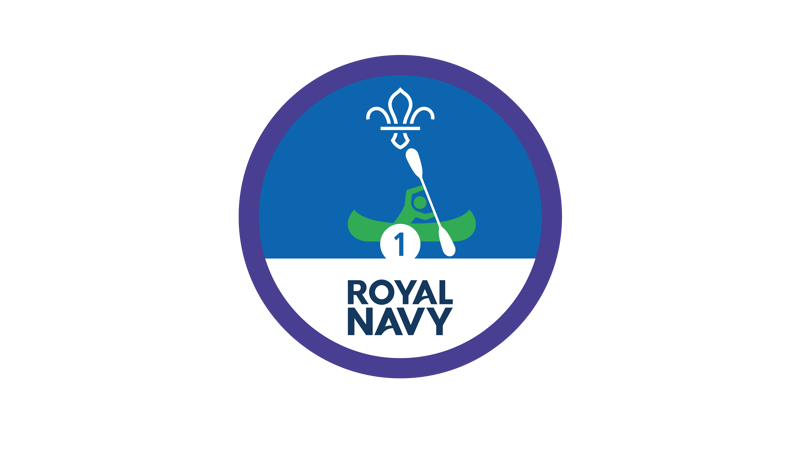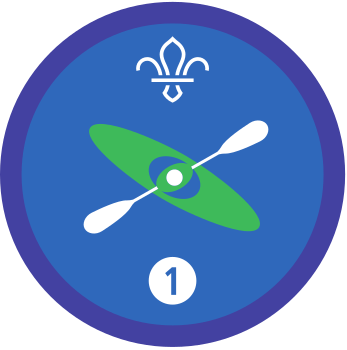
Make a paddlecraft
You’ll need
- Scissors
- Sticky tape
- Glue sticks
- Big pieces of card
- Pens or pencils
- Rulers
- Knives

As well as sponsoring our Time on the Water Staged Activity Badge, the Royal Navy also offer free powerboat instructor and paddlesport instructor courses for adult volunteers. Click the link below to head over to their supporter page and find out more.
Royal Navy- Split the group into pairs or small teams.
- Each group should use the templates to draw the shapes they need onto cardboard. They should draw the dotted lines too.
- Everyone should bend the cardboard carefully along any dotted lines.
- Everyone should glue the parts of their craft together, following any instructions that go with their template. They may also need to make paddles or add string.
- Everyone should use sticky tape to make the outside of their paddlecraft waterproof.
- Once their models are finished, each group should talk about (or label) the different parts of their craft.
- Everyone should test their crafts on water to see how well made they are.
Reflection
This activity helped everyone to try something new, and get ready for a practical paddling session. How are you feeling about a taster session in a real kayak or canoe? Do you feel more prepared because you know more about the parts of the paddlecraft and their similarities and differences? What do you think the taster session will be like? How will it be different to the preparation you’ve done in your meeting place.
This activity was also about valuing the outdoors by getting out and doing adventurous activities. After the paddling taster session, what other activities would you like to try out? How do adventurous activities make you feel?
Safety
All activities must be safely managed. You must complete a thorough risk assessment and take appropriate steps to reduce risk. Use the safety checklist to help you plan and risk assess your activity. Always get approval for the activity, and have suitable supervision and an InTouch process.
- Scissors
Supervise young people appropriately when they’re using scissors. Store all sharp objects securely, out of the reach of young people.
- Sharp objects
Teach young people how to use sharp objects safely. Supervise them appropriately throughout. Store all sharp objects securely, out of the reach of young people.
- Water games and activities
Be careful when doing activities with, in, or near water. Check surfaces and reduce the risk of slipping where possible. Make sure you have appropriate supervision for this activity.
- Choose whether to give the descriptions as well as the names. If the group has some knowledge already, you could just give them the names without the descriptions.
- There are multiple difficulties for building the paddlecraft, ranging from making a small toy model to building a life-sized, usable cardboard paddlecraft.
To complete this badge requirement, young people need to take part in a taster session. Paddle-Ability clubs and centres offer dedicated support for paddlers with a disability. Find your local Paddle-Ability clubs here.
All Scout activities should be inclusive and accessible.
Take part in a practical paddling session on water as part of the Paddle Sports Staged Activity Badge or Time on the Water Staged Activity Badge.
Young people could choose which type of paddlecraft they want to label and make.
